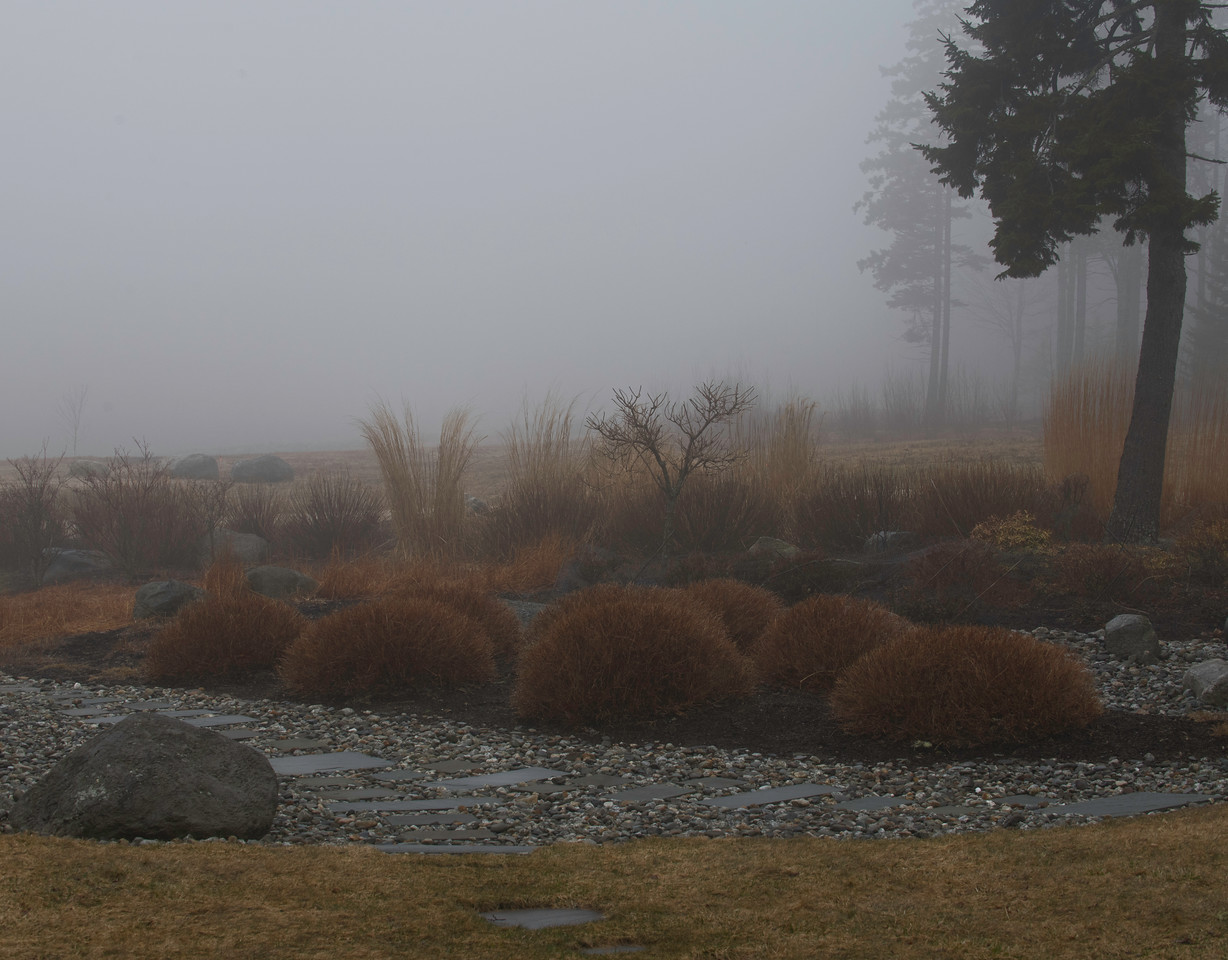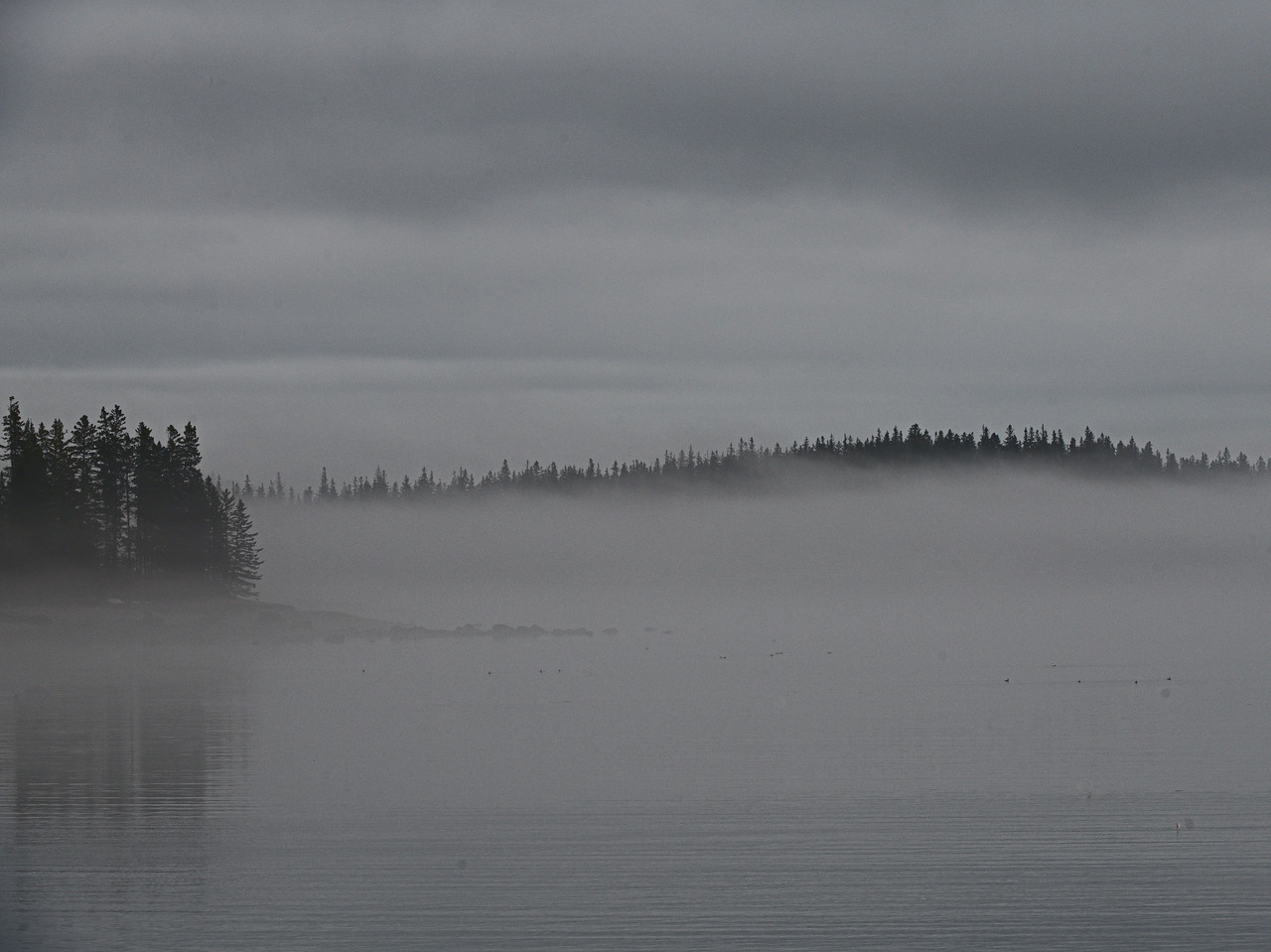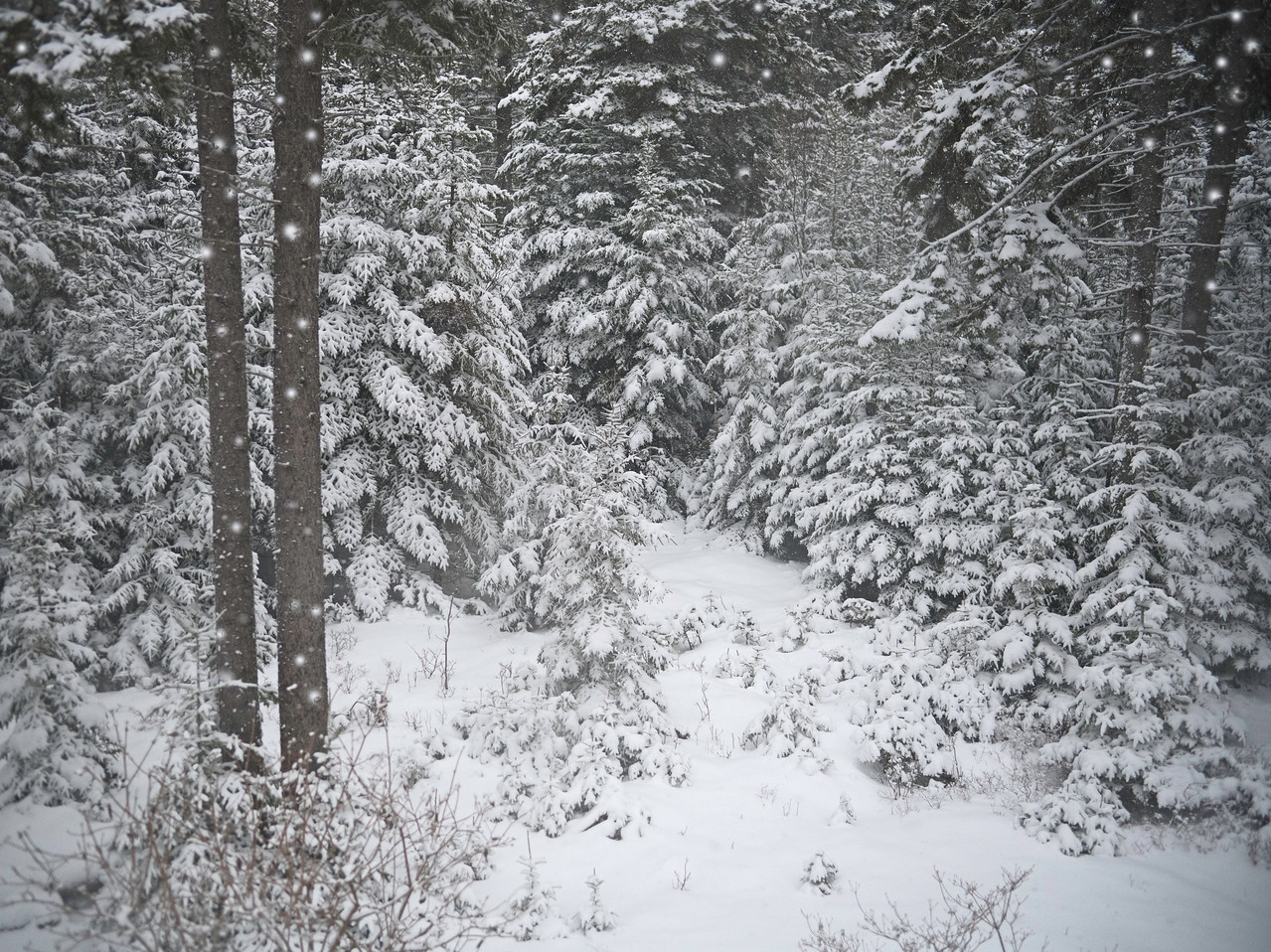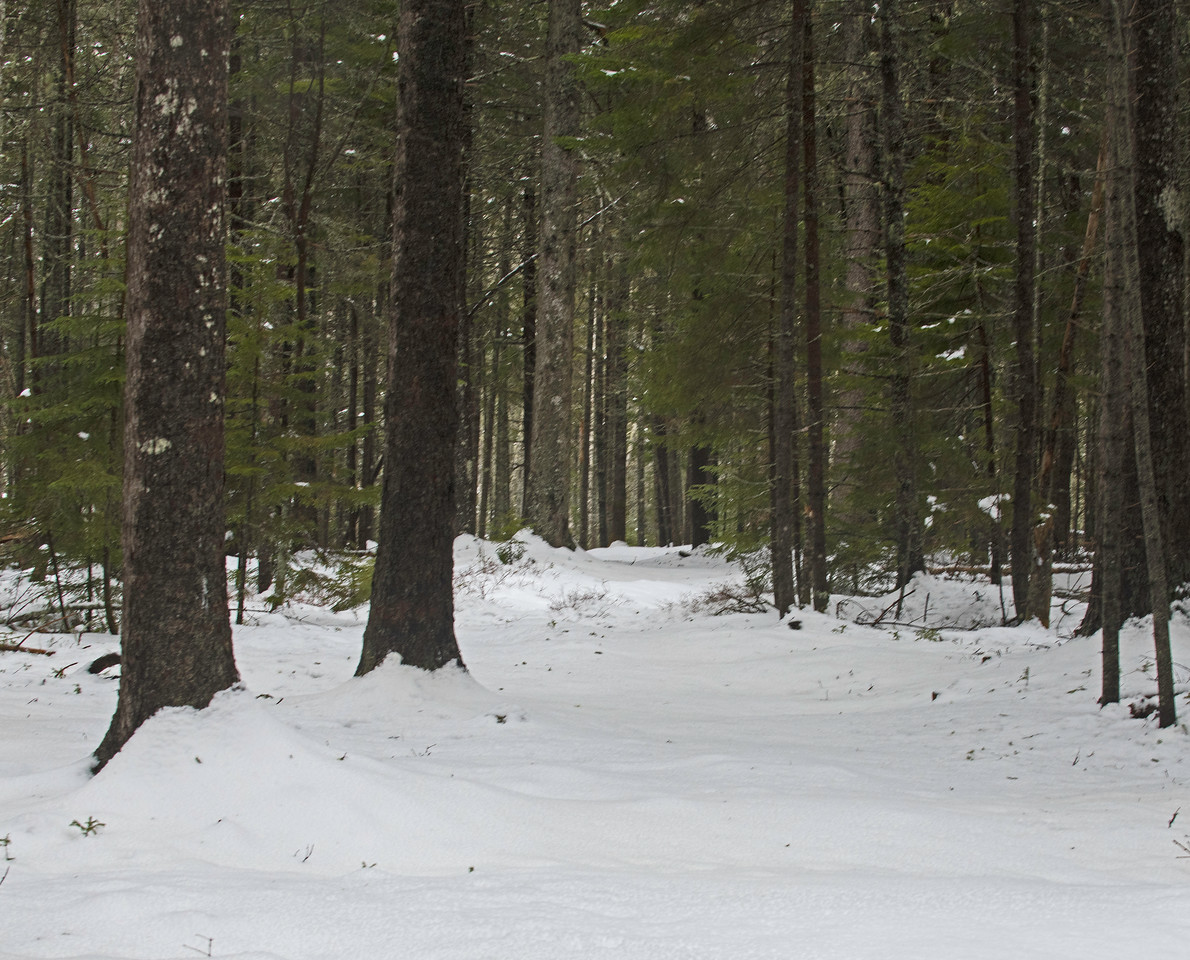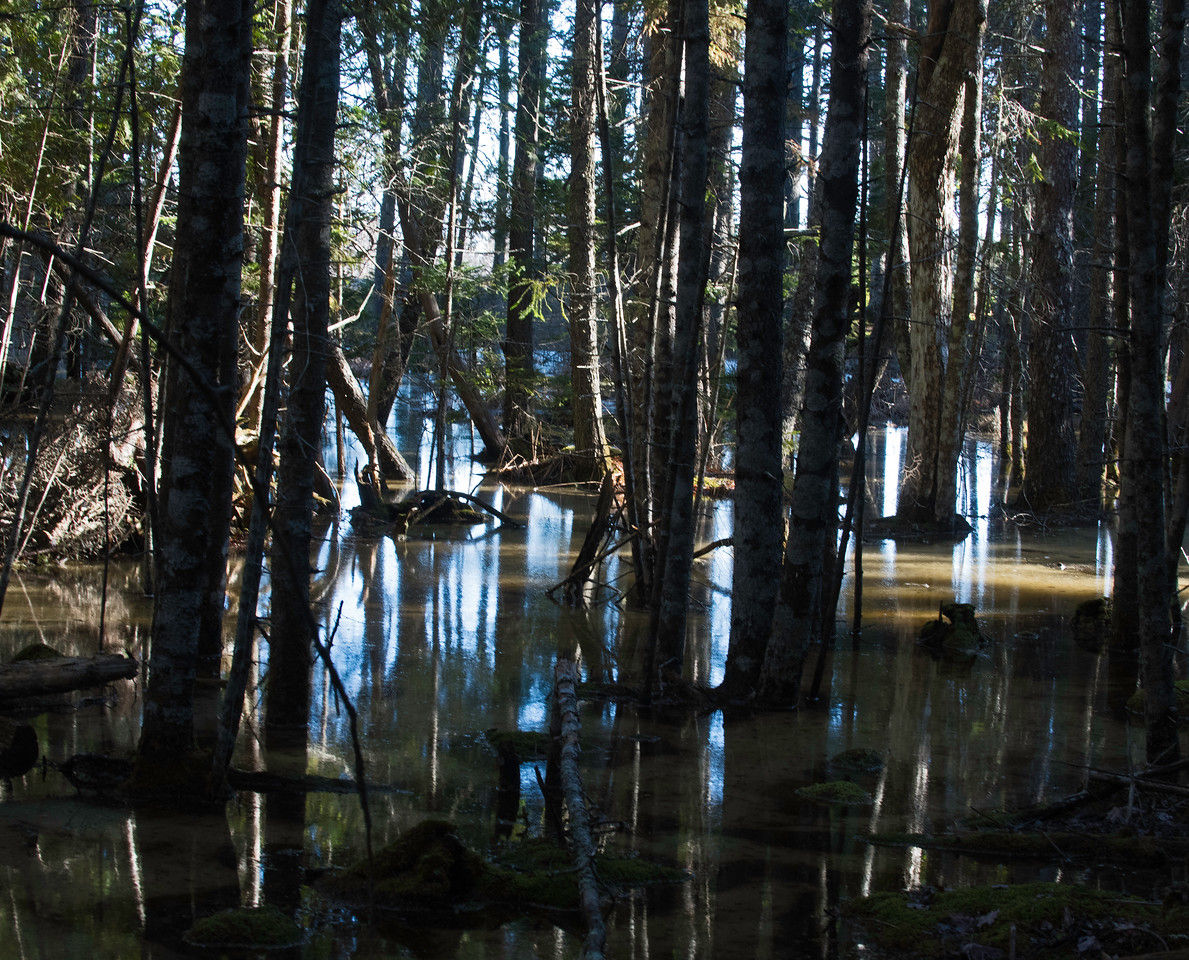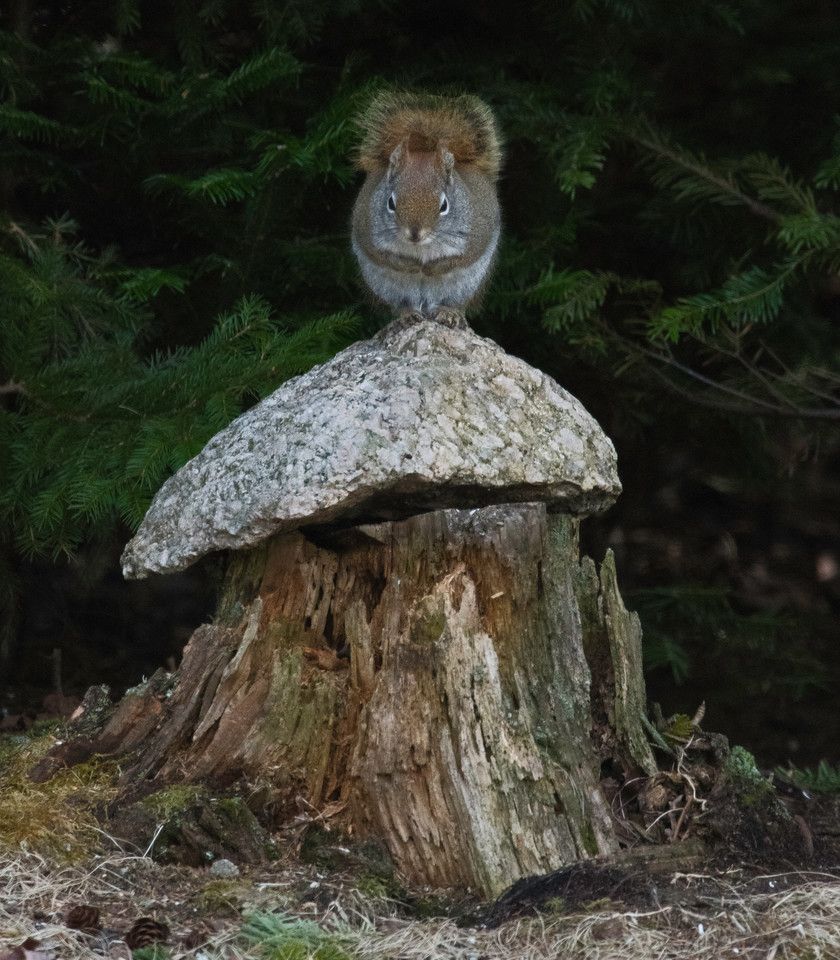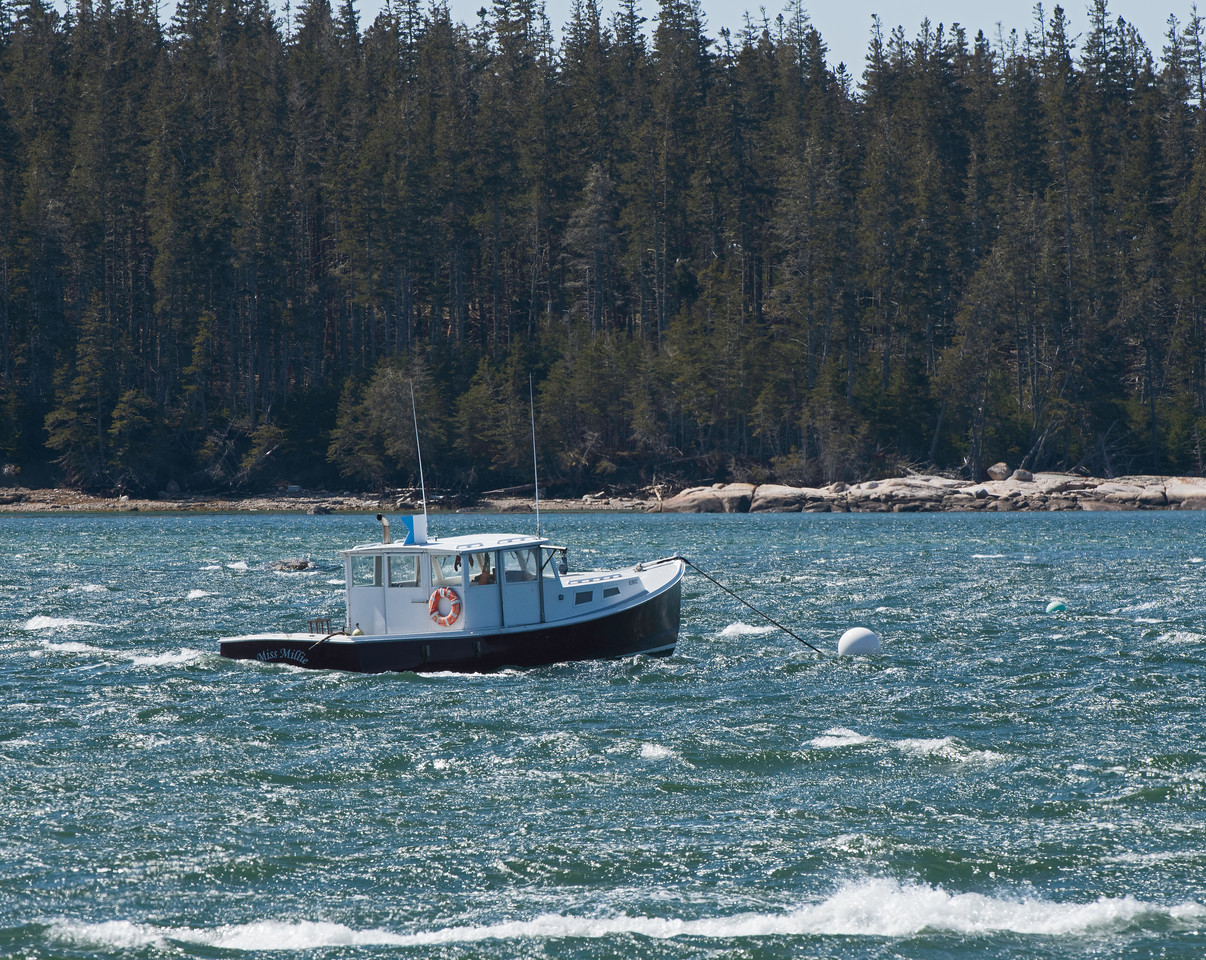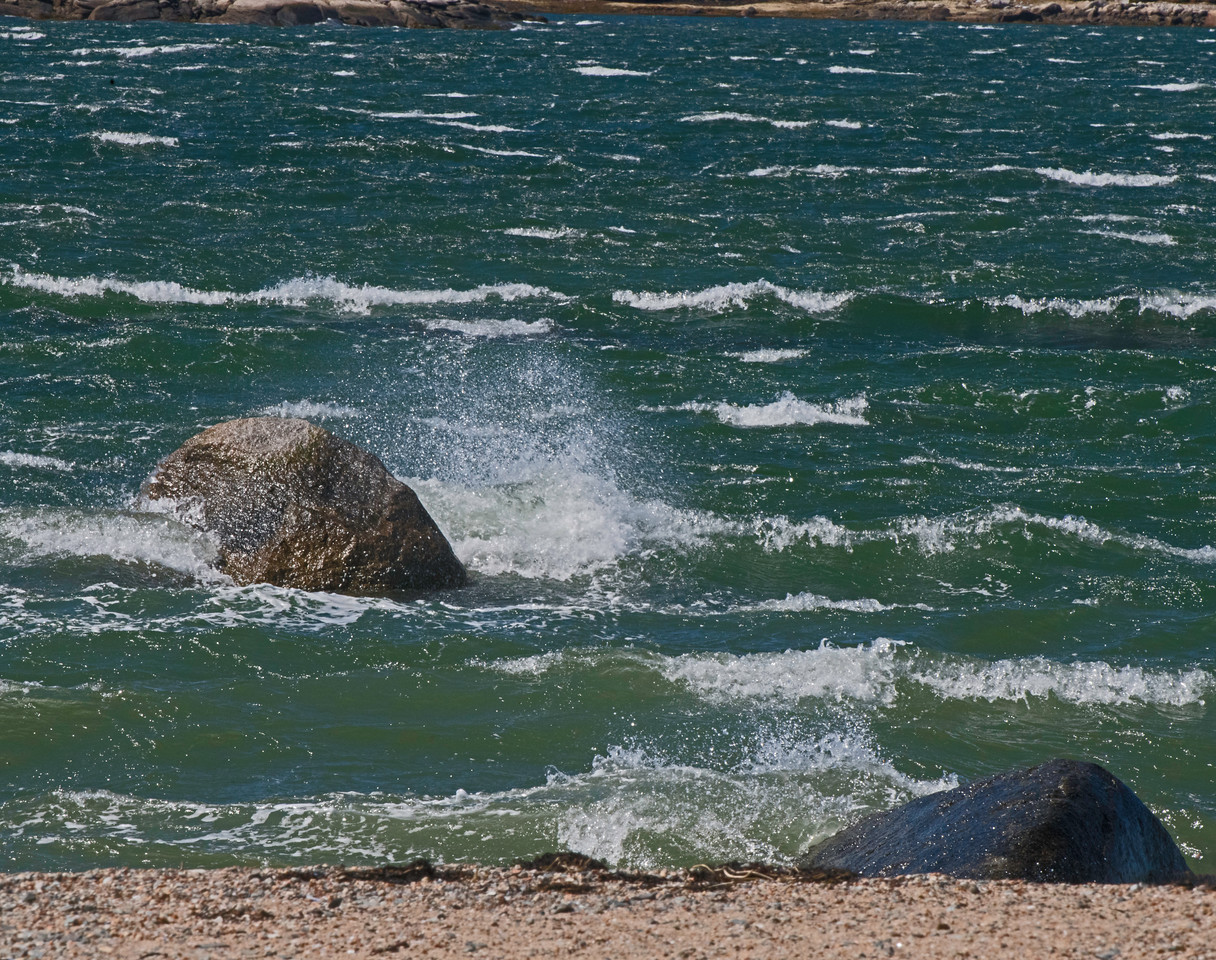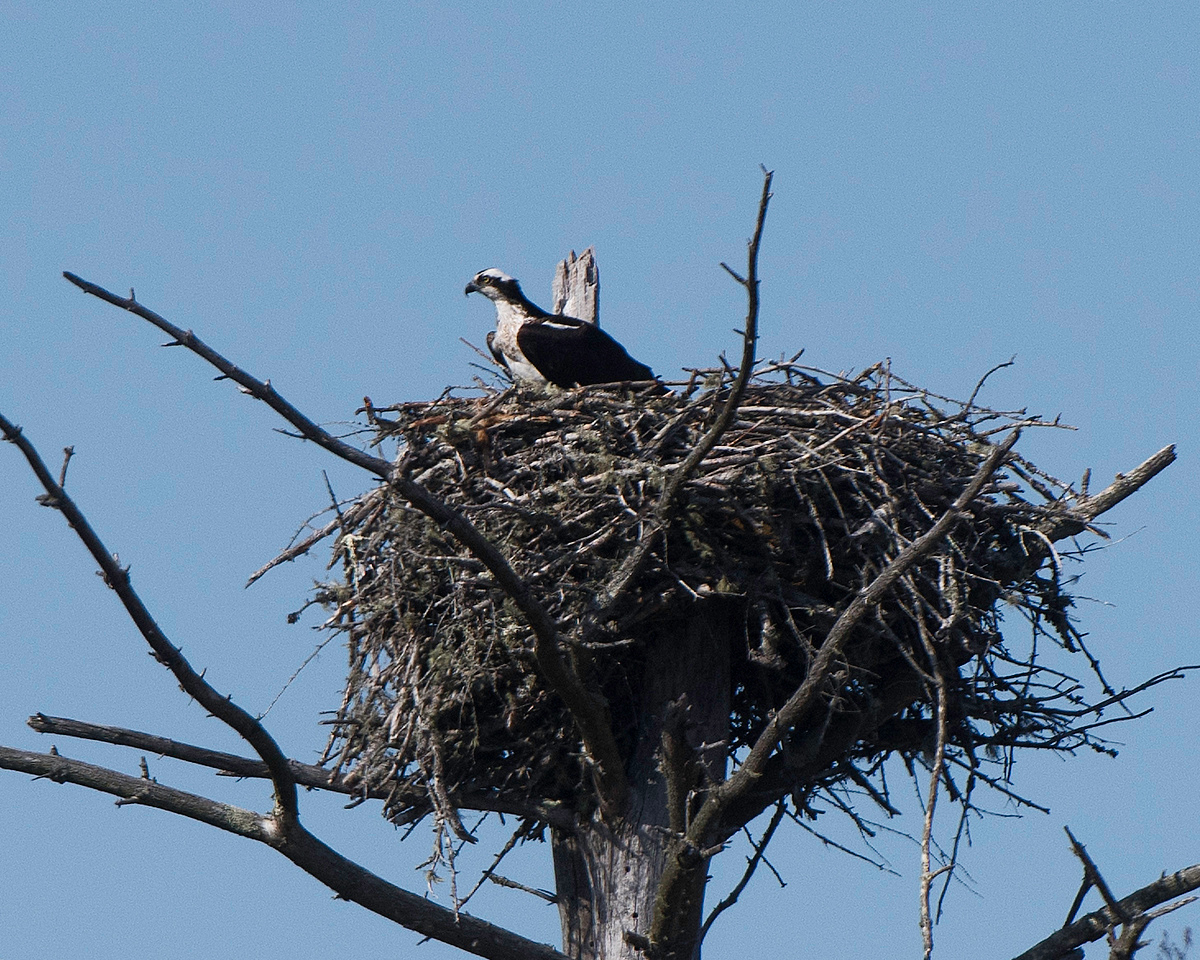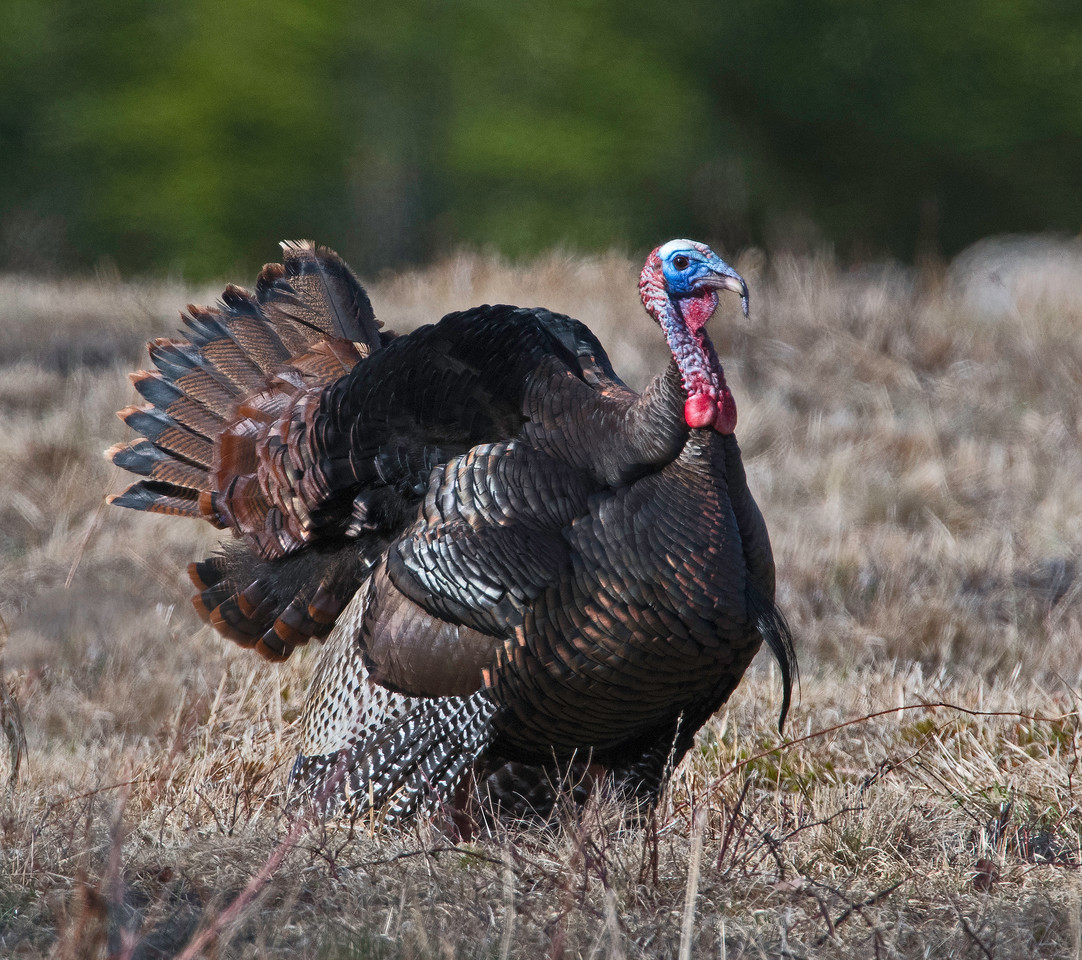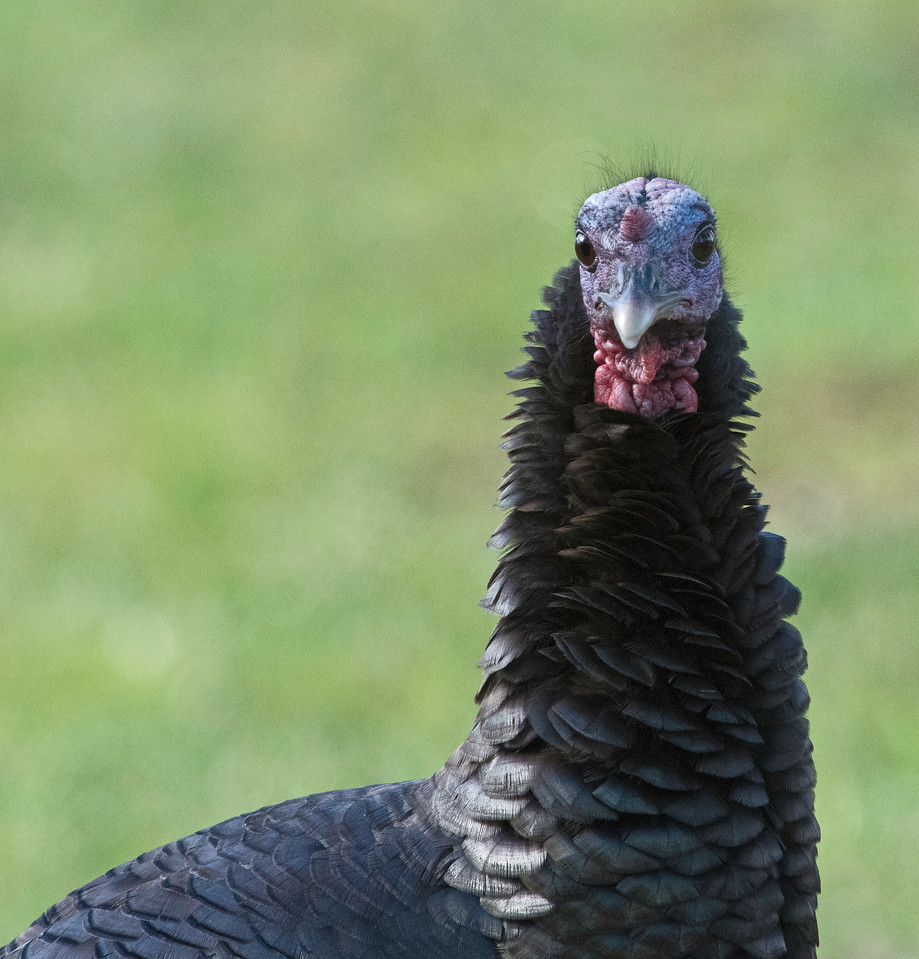Here’s a newly-arrived member of royalty that nobody bows to. She’s a Ruby-Crowned Kinglet – little king – but she’ll never wear a crown. Only the males of her species have crowns, and they only show their red daubs when they’re excited.
Otherwise, male and female RCKs wear identical commoners’ wardrobes on their four-inch bodies. Thus, they’re all but invisible to casual observers. But, these flying blurs do lead extraordinary lives. For one thing, this female likely will lay up to 12 eggs this month, each of which could weigh as much as she does. While she’s incubating her dozen future royals, her mate will be working his crown off to feed her. (Brooklin, Maine)

































